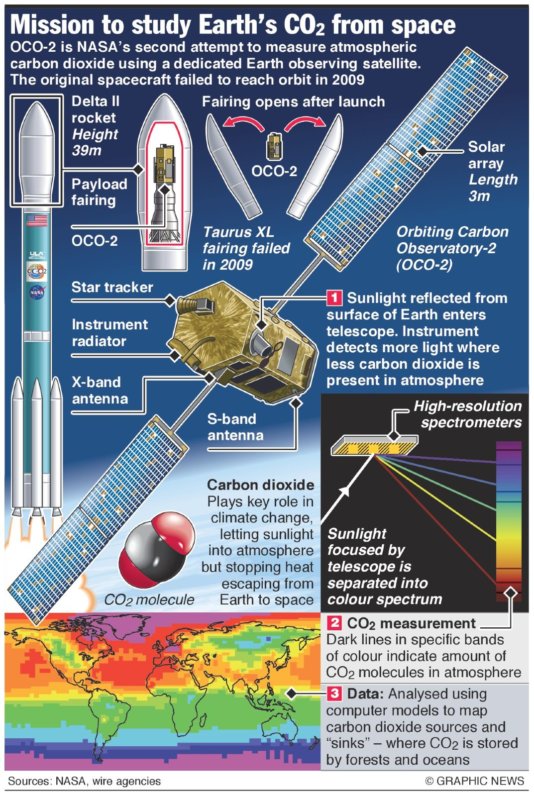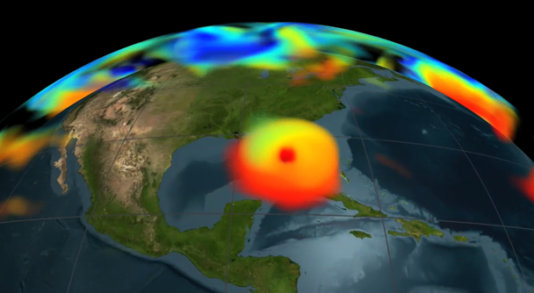- About
- Topics
- Picks
- Audio
- Story
- In-Depth
- Opinion
- News
- Donate
-
Signup for our newsletterOur Editors' Best Picks.Send
Read, Debate: Engage.
| December 19, 2014 | |
|---|---|
| tags: | #carbon emission, #NASA |
| located: | USA |
| by: | Itai Lahat |
Besides the fact that’s its beautiful and scary at the same time, it is also an expression of the amazing work that science can produce. Carbon emissions have been measured for decades, but the new OCO-2 satellite provided valuable input for creating the high-res simulation. The carbon dioxide visualization was produced by a computer model called GEOS-5, created by scientists at NASA Goddard’s Global Modeling and Assimilation Office. It is part of a larger simulation called Nature Run, which uses real data on atmospheric conditions and greenhouse gas sources to simulate the behavior of the planet’s atmosphere. It simulates winds, clouds, water vapor, dust, black carbon, sea salt and emissions from industry and volcanoes.
The sad thing is that those amazing scientific understandings are now prohibited as expert advice to the EPA (US Environmental Protection Agency). Yes, you read it right. While everyone’s attention was focused on the Senate and the Keystone XL decision on Tuesday, some pretty shocking stuff was quietly going on in the House of Representatives. The GOP-dominated House passed a bill that effectively prevents scientists who are peer-reviewed experts in their field from providing advice — directly or indirectly — to the EPA, while at the same time allowing industry representatives with financial interests in fossil fuels to have their say. Perversely, all this is being done in the name of “transparency.”
Bill H.R. 1422, also known as the Science Advisory Board Reform Act, passed 229-191. It was sponsored by Representative Chris Stewart. The bill changes the rules for appointing members to the Science Advisory Board (SAB), which provides scientific advice to the EPA Administrator. Among many other things, it states: “Board members may not participate in advisory activities that directly or indirectly involve review or evaluation of their own work.” This means that a scientist who had published a peer-reviewed paper on a particular topic would not be able to advise the EPA on the findings contained within that paper. That is, the very scientists who know the subject matter best would not be able to discuss it.
Representative Jim McGovern (D-MA) was outraged, telling House Republicans on Tuesday: “I get it, you don’t like science. And you don’t like science that interferes with the interests of your corporate clients. But we need science to protect public health and the environment.”
Director of the Union of Concerned Scientists Andrew A. Rosenberg wrote a letter to House Representatives stating: “This [bill] effectively turns the idea of conflict of interest on its head, with the bizarre presumption that corporate experts with direct financial interests are not conflicted while academics who work on these issues are. Of course, a scientist with expertise on topics the Science Advisory Board addresses likely will have done peer-reviewed studies on that topic. That makes the scientist’s evaluation more valuable, not less.”
While the white house is threatening to veto that bill if passed, it still is a sad indication to who and what agenda controls the largest economy on earth. Profit on the expanse of health and healthy environment seems to be dictating the rules, no matter how absurd they are.
By copying the embed code below, you agree to adhere to our republishing guidelines.

